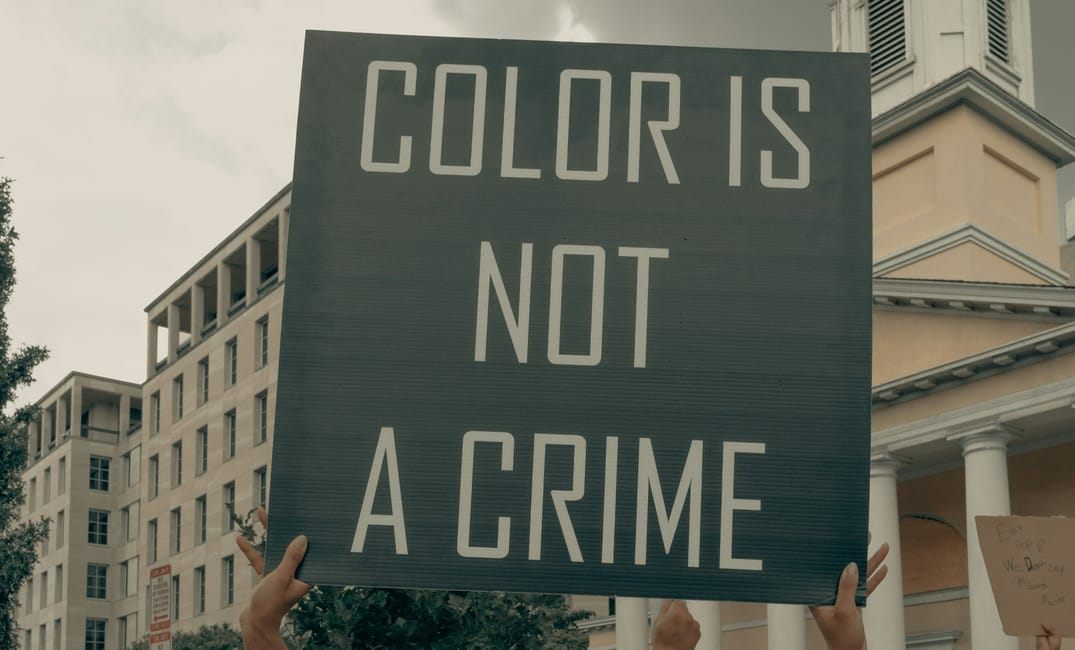✏️ April Whitworth
The global prevalence of the Black Lives Matter movement currently is incredible and extremely overdue. This has triggered people across the world, including myself, to educate themselves on racism and its history.
The idea of ‘color blindness’ as a racial outlook, whilst this may seem like an attractive idea in theory, it has real-life impact. This is an important, yet often overlooked, topic because it is at the forefront of how many white people perceive and talk about race. As well as this, color blindness links to key concepts, such as white privilege, white normativity, and systemic racism.
So what do people mean by colour blindness? When someone describes themselves as colourblind, it often doesn’t always come from a bad place. They try to see and treat everyone as the same, regardless of racial background. You hear this most commonly in childhood: white children are taught on an explicit level that people of colour are no different to them (although implicitly of course children pick up that whiteness is preferable and associate it with goodness, virtue and beauty).
Some do use it in a way to behave in a racist manner to avoid being held accountable: ‘I don’t see race therefore I cannot be racist’. No matter the intent, color blindness is an inappropriate and unhelpful outlook for racial equality.
By someone saying they ‘don’t see colour’, it means a lot of things, whether intended or not. Indirectly, it refuses to acknowledge that race shapes one’s life experience, and ignores the discrimination or injustice they have faced due to their race. As well as this, the fact that white people can simply ignore the presence of race demonstrates white privilege in action: people of colour are consistently reminded of their race through discrimination and therefore don’t have the luxury to ‘ignore’ it.
This concept of ‘white privilege’ means that the structure and systems in place inherently favour white people, and they are able to retrieve the benefits from this. This links with the idea that white is seen as ‘normal’ and the ‘default’ (this is referred to as white normativity) and therefore white people often don’t see their race as part of their identity.
As well as the ability to ignore race, it also comes across as an excuse for white people to not listen to those who have experienced racism first-hand, or to learn about complex concepts, in order to avoid uncomfortable conversations. Talking about racism requires self-reflection: this is needed, even though it is sometimes uneasy. Fundamentally, if you can’t see race, you don’t see racial inequality. This allows racism to continue in our society’s structures and institutions (known as systemic or institutional racism) whilst allowing white people to avoid responsibility for it.
This sentiment is amplified in crises – for example, with the recent murders of George Floyd, Breonna Taylor, Elijah McClain (to name just a few). If you refuse to see race, you are refusing to acknowledge the extent to which structural change is required – for instance, within the US policing and justice system. By being colourblind, you are refusing to see both explicit and implicit racism which continues today. If you can’t see race, you can’t act against systemic racism: you must either be actively anti-racist, or complicit in racism.
Colour blindness also causes issues in everyday life. If an employer claims they ‘don’t see colour’, this often leads to a lack of sufficient diversity across employees, with the vast majority being white. Additionally, it is often used as an excuse as to why they picked the white candidate over the black and minority Ethic candidate (‘I don’t see colour so race didn’t even factor into my decision’ type of outlook). Workplace discrimination occurs in the application process but continues into employment. Such behaviours must be questioned in these institutions at a grassroot level, because it influences who is in power at the top. In the FTSE 100 companies, there are more people named David and Steve, than women or ethnic minorities!
For many white people reading this, colour-blindness has been an idea you have grown up with. I challenge you to create a personal environment where you can acknowledge and listen to people’s experiences of race and more generally, be proactive about being anti-racist in each scope of your life.
This means educating both yourself and those around you, speaking out, listening to others, and deep reflection: you may have inbuilt biases you were not aware of. Reni Eddo-Lodge’s ‘Why I’m No Longer Talking to White People About Race’ made me consider race in different lenses I had failed to consider before. This movement has inspired me not only to be against racism, but to commit to anti-racism in my daily life through every means possible, and I encourage you to do the same.
This individual growth can translate into tangible change with collective action. Although signing petitions, donating funds, and attending protests, are critical, group action extends beyond this. I encourage you to transfer your knowledge into your relevant institution (be it your workplace, school, university, club etc) and work with other like-minded individuals to challenge racist conventions or principles which are entrenched in the institution. By educating ourselves and working together we can begin to dismantle the systems on which white supremacy is built.
Thanks for reading our article! We know young people’s opinions matter and really appreciate everyone who reads us.
Give us a follow on Instagram, Twitter and Facebook to stay up to date with what young people think.

